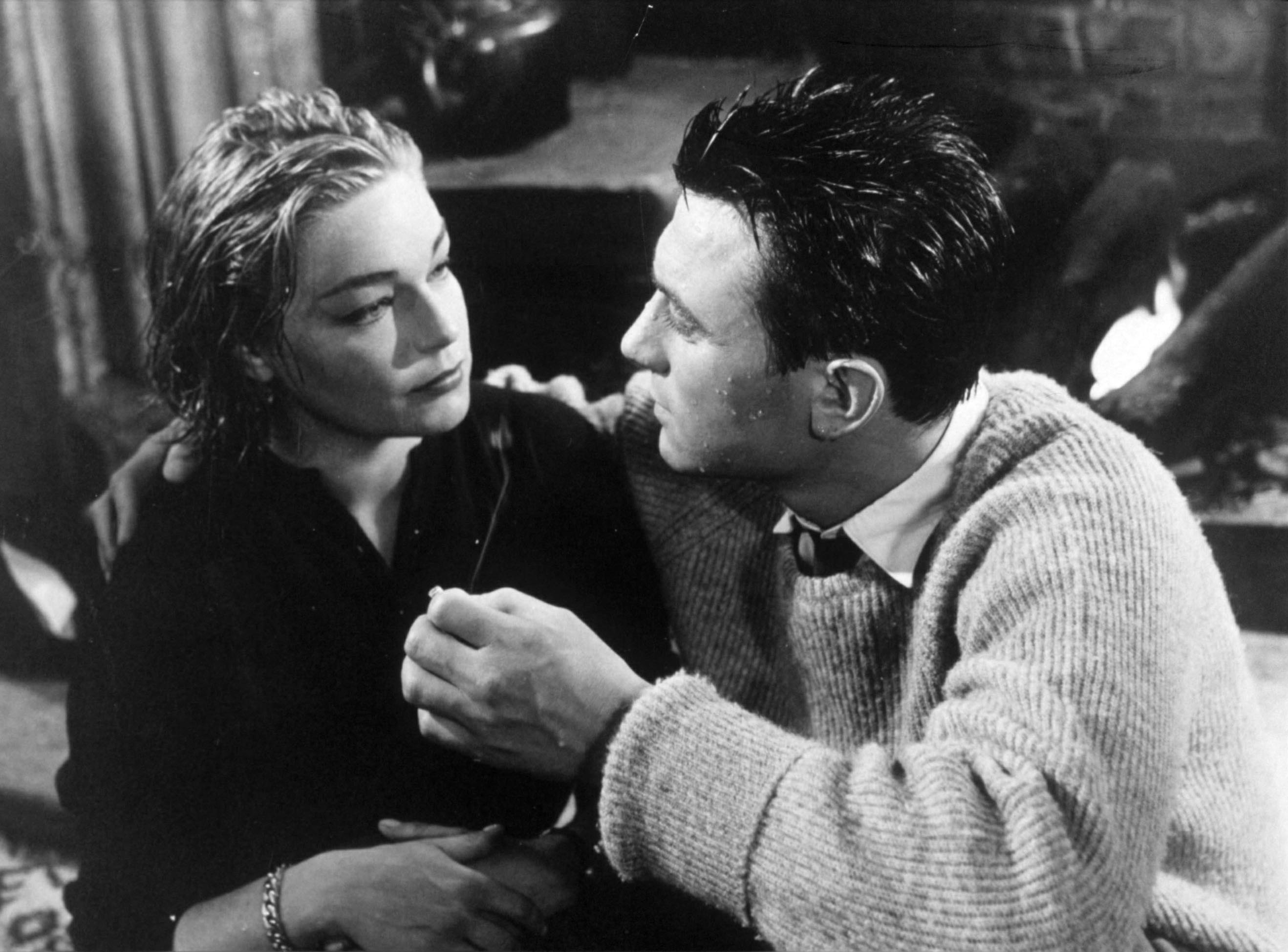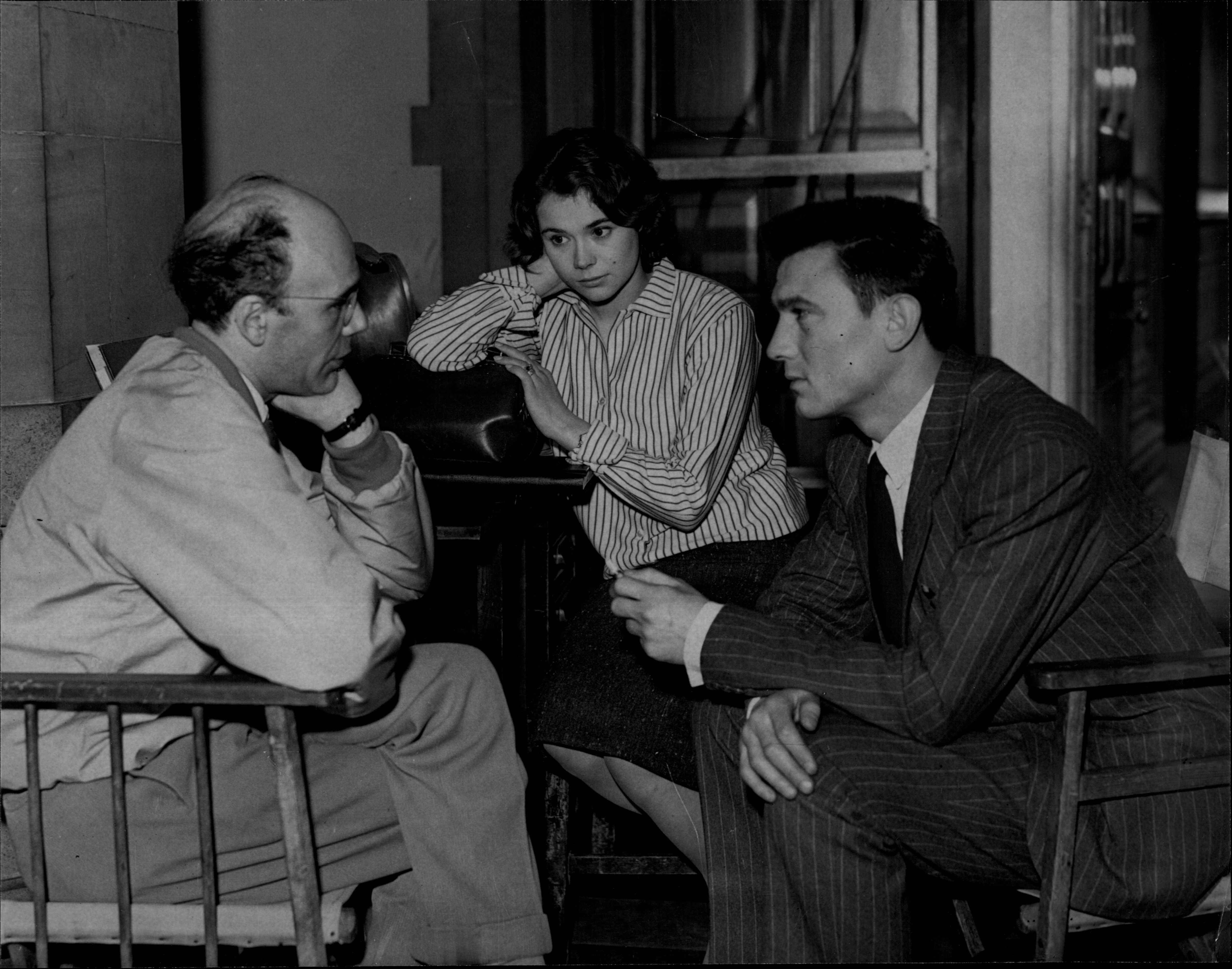How Room at the Top brought the X-rated movie in from the cold
The 1959 Oscar winner – recently re-released by the BFI – was considered revolutionary in its treatment of sex, class and ambition. It’s not so shocking now. Geoffrey Macnab looks at why, and investigates how it transformed attitudes towards film censorship

For once, the French were shocked by the uninhibited erotic charge of a British-made movie. In the summer of 1959, when Jack Clayton’s Room at the Top screened at the Cannes festival, the local reviewers and audiences blushed at the scenes of the two stars, Laurence Harvey and Simone Signoret, enjoying a little illicit love in the afternoon.
“Its sexual frankness has astonished French critics and the public in the same way that maturing offspring often take aback their more settled parents,” critic Alex Walker reported from the French Riviera.
Back in the UK, audiences were rendered equally hot and bothered by a mainstream film, with well-known actors, which had turned up at their local cinemas carrying an “X” certificate. The poster itself, depicting Harvey naked above the waist with his face on Signoret’s breasts, was enough to set knees trembling.
“Powerful, frank, adult entertainment,” warned the publicists, when the film, which has just been re-released by the BFI, first appeared. No children were to be allowed anywhere near it.
Room at the Top had been adapted from the “scorching” novel by a Yorkshire librarian, John Braine, published two years earlier. “Now, from the book’s shock-provoking pages come the characters who have caused such a storm of emotion,” trumpeted the trailer, which branded the film “a raw, savage story of our times”.
The film’s working-class protagonist Joe Lampton (Laurence Harvey) was very different from the “chaps” – the army officers, doctors and middle-class professionals who passed for heroes in most other British films of the 1950s. He was “bred in the slums”, but in a hurry to climb the social ladder. His ambitions (he wanted “an Aston Martin and a girl with a Riviera tan”) anticipated those of Sean Connery’s James Bond a few years later.
Room at the Top was shot in Bradford, with some of the exteriors filmed in nearby Halifax. Neither was a city that British cinemagoers were used to seeing on screen. The film dealt openly with adultery, and didn’t shirk from showing class antagonism. It had violence and drunkenness as well as sex.
Some British actors bitterly resented the choice of the incongruously glamorous Gallic star Signoret as the unhappily married wife Alice Aisgill (“French and all woman”) who starts such a torrid affair with Joe. “It was this old English thing that only foreigners have sex appeal,” former Gainsborough Studios star Jean Kent, who had been desperate to play Alice, complained about the way the character’s nationality was changed to accommodate Signoret.
The French star herself was very surprised to get the part, which was to win her an Oscar. At the time, she and her equally famous husband Yves Montand were regarded with intense suspicion in Hollywood because of their communist sympathies. She knew no US studio would have hired her, but English producers were less preoccupied by her politics than their transatlantic counterparts.

In spite of its smouldering reputation, Room at the Top seems tame enough today. It now has a “12” rating from the BBFC (British Board of Film Censors). The sex isn’t especially graphic. When Harvey and Signoret are shown on the beach, kissing in the rain, the camera tilts suggestively downwards, ending up with their bare feet in close up. But there is no real nudity. Last Tango in Halifax this is not. It’s the filmmakers’ lack of embarrassment or shame that separates Room at the Top from other movies of its era. There is plenty of suggestive pillow talk. “I know you’re my woman, Alice, my rush. All the love I’ll ever get now or evermore,” Harvey murmurs to Signoret at one stage, as they enjoy a post-coital embrace. Their tenderness is in stark contrast to the general behaviour of the other characters.
There is a sequence of Joe being beaten up, but like the sex scenes, it is shot in restrained, if highly stylised, fashion. What remains shocking, though, is the emotional viciousness with which the characters treat one another. The film portrays post-war northern England as a bastion of snobbery, bullying, sexism and small-time corruption.
This was a world upon which rock’n’roll and teen culture hadn’t yet intruded. Whereas Hollywood had anti-heroes like James Dean and Marlon Brando, British cinema’s screen rebels of the 1950s still wore suits and brogues. They weren’t in gangs. Instead, characters like Joe Lampton, back from the war and trying to rebuild their lives, landed office jobs in auditing and accounts.
Producer John Woolf of Romulus Films had first become interested in Room at the Top when he watched an episode of the BBC’s Panorama that had a group of Bradford housewives gossiping about the then unpublished novel their local librarian had just written. “They made the book sound quite sensational,” he said.
Woolf told his brother (and business partner) James about the novel. As he later explained to film historian Brian McFarlane, they bought the film rights immediately, fending off fierce competition to do so.
The Woolf brothers were always expecting a fight with the censors. They were resigned to making the compromises required in order to get the film seen in British cinemas. They were startled, though, when Room at the Top came back from the BBFC with a red slip, indicating it had been rejected. John Woolf rushed over to complain to John Trevelyan, secretary of the BBFC. “In those days, an ‘X’ certificate could be something very bad because it would potentially cut out a huge part of the audience,” Woolf’s son Jonathan Woolf tells me of the producers’ anxieties that their film was being set up to fail. A disastrous preview in north London hadn’t helped their state of mind. An audience expecting to see Hammer’s Dracula and Frankenstein had booed throughout, reducing director Jack Clayton to tears.

Woolf asked what he needed to cut to avoid the stigma of the “X”. Trevelyan blithely replied, “I am not going to allow you to cut out anything.” The BBFC secretary proceeded to explain that he was a firm admirer of the film and felt that it was exactly what was needed to establish the “X” category for serious, adult-oriented entertainment.
In the end, the producers benefited both from the strong whiff of scandal that clung to the movie because of its certificate, and from the reverential reviews it subsequently received. Some cinemas banned it, but others did roaring business. By Hollywood standards, this was a modestly budgeted affair and yet it broke box office records at the Plaza, Piccadilly Circus, the venue where it was launched. Only Cecil B DeMille’s The Ten Commandments (1956) had ever done better business there, and then only because ticket prices had been increased to reflect the grandiose nature of DeMille’s biblical epic.
Clayton (who had won an Oscar for his short The Bespoke Overcoat) made the film in dirty, realist fashion. Cinematographer Freddie Francis deliberately shot it in dull light. Neither Harvey, nor Signoret, nor Heather Sears, playing the boss’s daughter whom Joe sets out to seduce (sure enough, he gets her pregnant), was lit in the flattering way that movie stars normally expect.
The most poignant moment comes when a drunken Joe, consumed with self-loathing over his betrayal of Alice, gets beaten up. He is jumped on by a man whose girlfriend he has been chatting up. The man and his friends take turns in punching and kicking Joe before leaving him for dead beside the canal. They regard him as a snob from a white-collar background. “Stick to your own class,” they sneer at him, presuming that he is slumming it. The irony is obvious. At the start of the film, when everybody is calling him a “small-town nobody”, Joe is warned again and again to “stick to his own people”. Through his charm, seductiveness and cunning, he has escaped his background, but remains just as much of an outsider as when he started.
There was considerable xenophobia in the way Harvey was treated in the press. He was from a Lithuanian-Jewish background, and some critics struggled to accept him in quintessentially British roles. It’s striking how reviewers scorn him in precisely the same way that the upper classes look down at Joe Lampton. “He [Harvey] has demonstrated conclusively that it is possible to succeed without managing to evoke the least audience interest or sympathy – and to go on succeeding despite unanimous critical antipathy and overwhelming public apathy,” one prominent film historian wrote of him.
Meanwhile, filmmakers like Lindsay Anderson, Karel Reisz and Tony Richardson, associated with the new wave of so-called “kitchen sink” dramas, quickly distanced themselves from Room at the Top. “He [Jack Clayton] wasn’t part of our group at all,” Anderson later said of the film’s director.
There is a paradox here. This was one of the most influential British films of its era, groundbreaking in everything from its treatment of sex and class to the downbeat style in which it was shot and acted – and yet it continues to be regarded with grave suspicion. All these years later, the critics and public still don’t know quite what to make of the picture or its jumped-up hero, Joe Lampton.
‘Room at the Top’ is out now on BFI Player






Join our commenting forum
Join thought-provoking conversations, follow other Independent readers and see their replies
Comments